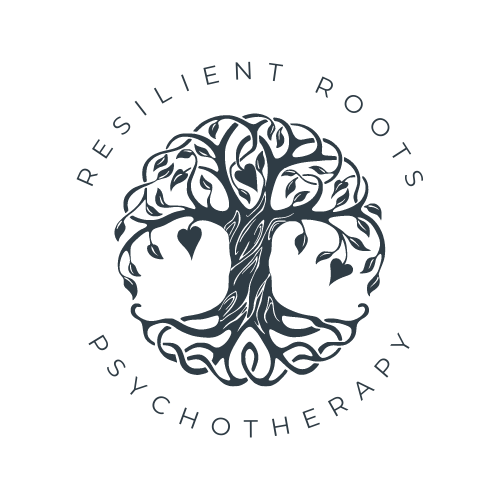Why Is My Inner Child So Angry? Understanding and Healing the Roots of Childhood Anger
The inner child represents a critical aspect of our subconscious, embodying the experiences, emotions, and memories from our early years. This concept, integral to various therapeutic approaches, reveals how unresolved childhood traumas or unmet emotional needs can influence our adult lives. One of the most profound and often perplexing manifestations of these unresolved issues is persistent anger. Understanding the roots of this anger and learning to engage and heal your inner child can be transformative.
The Influence of Carl Jung on Inner Child Work
The inner child concept is deeply rooted in the work of Carl Jung, a pioneering figure in psychology. Jung introduced the idea of the "child archetype," emphasizing the importance of acknowledging and integrating the childlike aspects of our psyche. He believed the inner child holds the key to our deepest emotions and memories, both joyful and traumatic.
Jung's theory of the child archetype is part of his broader framework of archetypes and the collective unconscious. He posited that the inner child symbolizes both the innocence and potential for growth as well as the unresolved traumas and unmet needs of our past. According to Jung, healing the inner child is essential for achieving individuation, the process of becoming a fully realized and authentic self. This process involves integrating various aspects of the self, including the wounded inner child, to create a harmonious and balanced psyche.
By addressing the wounds of the inner child, we can reconcile the past and foster a sense of wholeness and harmony within ourselves. This integration allows us to move beyond the limitations imposed by our past experiences, unlocking our true potential and leading to greater emotional and psychological well-being.
Understanding the Angry Inner Child
The anger stemming from your inner child often reflects entrenched pain, frustration, and unmet needs from childhood. This anger might not always be overt; it can manifest as irritability, resentment, or depression. To truly understand why your inner child is angry, we must explore the possible causes:
Unmet Emotional Needs: During childhood, emotional needs such as love, validation, and security are paramount. If these needs were not met adequately, it could lead to feelings of neglect and anger. For instance, if a child feels ignored or unimportant, they might grow into an adult who harbors unresolved anger towards authority figures or loved ones who remind them of their caregivers.
Trauma and Abuse: Traumatic experiences, whether physical, emotional, or sexual abuse, leave lasting scars. Children who undergo such experiences often feel powerless and voiceless, leading to repressed anger that can surface in various ways during adulthood.
Invalidation and Criticism: Constant criticism or invalidation can erode a child's self-esteem. An inner child who constantly faced criticism might become an adult who is overly self-critical or harsh towards others, fueled by underlying, unresolved anger.
Abandonment and Rejection: Experiences of abandonment or rejection, whether through parental neglect, divorce, or loss, can lead to a profound fear of abandonment and subsequent anger. This anger can be a defense mechanism to guard against future hurt.
Recognizing the Signs of an Angry Inner Child
Recognizing the signs that your inner child is angry is the first step toward healing. These signs may include:
Emotional Reactivity: Overreactions to minor triggers, such as excessive anger over trivial matters.
Self-Sabotage: Engaging in behaviors that hinder your success or well-being, often subconsciously.
Relationship Struggles: Difficulty maintaining healthy relationships due to mistrust, fear of abandonment, or excessive anger.
Low Self-Esteem: Persistent feelings of inadequacy and self-doubt, often stemming from childhood experiences.
Healing Activities to Engage with Your Inner Child
Engaging with and healing your inner child requires patience, compassion, and a willingness to revisit past experiences. Here are some activities that can help:
Inner Child Visualization: Visualization exercises can be powerful tools to connect with your inner child. In a calm and quiet space, close your eyes and imagine yourself as a child. Visualize comforting and reassuring this child, telling them the words they needed to hear. This can help in fostering a sense of safety and love.
Journaling: Journaling allows you to consciously reflect on your childhood experiences and emotions. Use the following prompts to guide your writing:
What are some of your earliest memories of feeling angry? What caused this anger?
Reflect on moments when you felt your needs were not met. How did this make you feel then, and how does it affect you now?
Write a letter to your inner child, expressing understanding and compassion for their anger.
Play and Creativity: Engage in activities you enjoyed as a child to reconnect with your inner child's sense of joy and creativity. Here are some examples:
Drawing and Painting: Use colors and shapes to express your emotions and thoughts.
Playing Games: Engage in board games, puzzles, or video games that you loved as a child.
Building and Creating: Use building blocks, Legos, or craft materials to create something fun.
Storytelling: Write or tell imaginative stories, just as you might have done when you were younger.
Outdoor Activities: Play outside, run, or engage in sports you enjoyed during childhood.
Dialogue with Your Inner Child: Engage in a written or verbal dialogue with your inner child. Ask them what they are angry about and listen to their responses with empathy and understanding. This dialogue can help in uncovering and addressing the specific sources of anger.
The Role of Therapy in Healing the Angry Inner Child
Therapeutic approaches can offer structured support in healing your inner child. Here are some methods to consider:
Hypnotherapy: As discussed in my previous blog post on inner child healing, hypnotherapy is a powerful tool for accessing and healing the subconscious mind. In a hypnotic state, you can safely revisit and reprocess childhood memories, allowing for the release of long-held negative emotions and beliefs. This process can be particularly effective in addressing the root causes of anger.
Cognitive-Behavioral Therapy (CBT): CBT can help you identify and challenge negative thought patterns rooted in childhood experiences. By understanding the connections between your thoughts, emotions, and behaviors, you can develop healthier ways to manage and express your anger.
Somatic Experiencing: This therapeutic approach focuses on the body's responses to trauma. Since childhood trauma can be stored in the body, somatic experiencing helps release this stored tension and emotional energy, providing relief from chronic anger and other negative emotions.
Moving Forward: Embracing Your Inner Child
Healing the anger of your inner child is a journey that requires time, patience, and self-compassion. This process involves not only understanding and addressing the root causes of your anger but also implementing daily practices that support emotional healing and growth. Here are some additional steps to support your healing process:
Practice Self-Compassion: Treat yourself with the same kindness and understanding that you would offer to a child. Acknowledge your struggles and celebrate your progress, no matter how small. Self-compassion involves being gentle with yourself, especially when you encounter setbacks, and recognizing that healing is a gradual process.
Establish Healthy Boundaries: Learn to set and maintain healthy boundaries in your relationships. This helps protect your emotional well-being and fosters respectful interactions. Boundaries are essential for creating a safe space where you can express your needs and feelings without fear of judgment or rejection.
Seek Support: Surround yourself with supportive and understanding individuals who respect your healing journey. Professional support from a therapist or counselor can provide invaluable guidance and encouragement. Joining support groups or communities of individuals who are also working on inner child healing can offer additional perspectives and a sense of solidarity.
Mindfulness and Meditation: Engage in mindfulness practices and meditation to cultivate present-moment awareness and reduce emotional reactivity. These practices can help you stay grounded and centered, even in the face of challenging emotions. Regular mindfulness exercises, such as deep breathing, body scans, and mindful walking, can enhance your ability to manage stress and maintain emotional balance.
Practice Gratitude: Cultivate a habit of gratitude by regularly reflecting on the positive aspects of your life. Keeping a gratitude journal where you write down things you are thankful for can shift your focus from what is lacking to what is abundant, promoting a more positive outlook.
By integrating these practices into your daily routine, you can create a nurturing environment for your inner child to heal and thrive. The journey to healing your inner child is personal and unique, so be patient with yourself and honor your process.
Understanding why your inner child is full of anger is a crucial step toward healing and emotional wellness. By identifying the causes of this anger and engaging in activities that support and heal your inner child, you can significantly improve your emotional well-being.
As a dedicated mental health therapist and hypnotherapist, I am here to support clients in Indiana and Colorado on their path to inner child healing and emotional wellness. If you are ready to embark on this powerful journey, take the first step towards reclaiming your inner joy, peace, and vitality by scheduling a free consultation today.
For further reading on inner child healing, visit my previous blog post on “Nurturing The Inner Child Through Hypnotherapy” and explore the profound benefits of hypnotherapy in addressing unresolved childhood traumas and unmet emotional needs.

